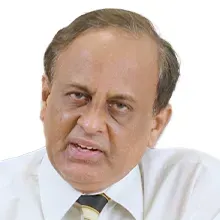Overview of LVAD Implant Treatment India
When the left ventricle becomes damaged and is not working properly, blood cannot be supplied to the whole body and hence the function of the heart fails. The left ventricle is the lower left portion of the heart which contracts and pumps blood throughout the body. The left ventricle failure is also termed as heart failure. To assist the heart in functioning after left ventricle damage, LVAD is used to compensate for the function of the heart. Left Ventricular Assistive Device implanted in the heart to help the ventricle supply blood to the whole body.
The cost of LVAD Implant in India ranges from ₹ 4,55,000 to ₹ 6,55,000. The treatment of LVAD implants has high success rates in India and is also a cost-effective treatment for patients with heart failure.
Types of LVAD Implant Treatment India
There are many types of LVAD according to the design and implantation method. These are:
- Centrifugal Flow LVADs
- Axial Flow LVADs
- Pulsatile Flow LVADs
- Total Artificial Heart
- Implantable LVADs
- Paracorporeal LVADs
Centrifugal Flow LVADs
These devices use a force of rotation that enhances the flow of blood from the left ventricle into the aorta and to the body. This device is commonly used and is durable. It has the advantage of survival for many years.
Axial Flow LVADs
Axial flow LVADs use a unique mechanism that helps in creating a force to move blood from the left ventricle to the aorta. Unlike centrifugal LVAD they are designed to provide a flow of blood continuously.
Pulsatile Flow LVADs
Pulsatile flow LVADs are not a commonly used device. The pulsatile flow of LVADs works in the same manner as the natural function of the heart. It uses a unique mechanism to push blood rhythmically just like the heart.
Total Artificial Heart
In cases of severe heart failure, a total artificial heart can be implanted. This device replaces both the left and right ventricular function and provides a complete and permanent solution for the support of blood flow.
Implantable LVADs
These devices are surgically implanted inside the body. They typically require a more invasive procedure but provide more support to the function of the heart.
Paracorporeal LVADs
These devices are partially implanted and connected externally to a machine. They are often used before the transplantation of the heart.
Procedure of LVAD Implantation
Here is a general overview of the procedure of LVAD Implantation:
Anesthesia: Anesthesia is administered for the comfort of the patient and pain management throughout the procedure.
Surgical Opening: A surgical cut is made in the chest to expose the heart.
Positioning the LVAD: The LVAD is implanted near the heart of the patient. This device consists of a pump that helps the left ventricle which is the primary pumping chamber of the heart in circulating blood. Connections are made between the pump, heart, and major blood vessels.
Linking Components: Tubes are attached to the chambers of the heart and blood vessels that enable blood to flow from the heart into the LVAD pump and then back into the body.
Power source: The LVAD relies on an external power source that is worn outside the body of the patient for functioning and maintaining blood circulation.
Closure of Incision: Once the LVAD is securely in place, the surgical incision is closed by using sutures or staples.
Recovery: The patient is carefully monitored during the recovery phase often within the intensive care unit (ICU). Adjustments to the LVAD settings might be made to ensure maximal performance.
Cost of LVAD Implant Treatment in India
The cost of LVAD Implant in India ranges from ₹ 4,55,000 to ₹ 6,55,000. The cost can vary according to the type of LVAD used in the procedure. It can also vary according to the condition of the patient at the time of surgery.
| Cost of LVAD in Different Cities of India |
Min in INR |
Max in INR |
| Delhi |
₹ 4,59,000 |
₹ 6,53,600 |
| Chennai |
₹ 4,60,000 |
₹ 6,30,000 |
| Mumbai |
₹ 4,55,000 |
₹ 6,55,000 |
| Hyderabad |
₹ 4,58,000 |
₹ 5,99,000 |
| Gurgaon |
₹ 4,56,000 |
₹ 5,90,000 |
Symptoms & Risk Factors of LVAD Treatment in India
Indications of LVADs Implant
Here are some of the conditions in which LVAD is implanted:
- End-stage heart failure
- Bridge to transplant
- Destination therapy
- Myocardial recovery support
- Bridge to candidacy
- Cardiogenic shock
- Acute myocardial infarction (heart attack) with severe heart failure
- Intractable angina (chest pain)
- Cardiomyopathy with functional decline
- Ventricular arrhythmias unresponsive to medical therapy
Risk factors of LVAD Implantation
Infection
Like other surgeries, there is a risk of infection at the site of LVAD implantation or anywhere in the body.
Bleeding and Hematoma
There is a risk of bleeding during and after the procedure. Sometimes the blood accumulates at the surgical site and can cause severe complications.
Pneumothorax
During implantation, there is a small risk of damage to the lung. Air enters the chest cavity and can cause severe complications.
Allergic Reaction
Some patients may have allergic reactions to the materials used in the left ventricular assistive device.
Blood Vessel Damage
Blood vessels may be damaged during catheter insertion. It can further cause complications of bleeding or hematoma.
Device Malfunction
Sometimes mechanical failure of the LVAD can occur that will require revision surgery for the device replacement or repair.
Organ Dysfunction
LVAD support can impact other organs, such as the kidneys or liver, and lead to dysfunction.
Right Heart Failure
LVAD support may put extra stress on the right side of the heart which can lead to right heart failure. This further increases the intensity of symptoms in the patient.
Arrhythmias
The presence of LVAD can cause irregular heartbeats that can lead to life-threatening situations.
Top Doctors for LVAD Implant in India
Empower your Health with the Expertise of Leading Medical Professionals.
Dr. Vishal Rastogi
Department of Cardiac Sciences
Additional Director
Book Appointment
Dr. Dhananjay Malankar
Department of Cardiology
Cardiac Surgery
Book Appointment
Treatment Costs for LVAD Implant
Be the change and be an opportunist in transforming healthcare.
How it's Works
Guiding your Journey from Discovery to Treatment Planning and Beyond.
Discovery
Get a consultation to discover about your treatment
Pre-Treatment
Admission to the best hospital and all pre-treatment facilities
Post Treatment
Get post-treatment follow-up care with medicine fulfillment
Treatment Planning
Hassle-free treatment planning with package & cost estimations
in-treatment
world-class quality procedures and equipment for treatment



















